Schneider Shorts of 12 May 2023 – a killer doctor in Berlin, a bully in Harvard, Germans in Saudi Arabia, misconduct findings in Canada, an ex-editor in Vietnam, papermillers grace various publishers, Greatest Scientist returns to Austria, a German tool against papermills, and finally: several retractions, one even with a confession!
Table of Discontent
Science Elites
- Berlin Killer? – cardiologist at Charité Berlin arrested for homicide of patients
- Mentorship, supportive guidance, and friendship – Harvard climatologist Daniel Schrag sanctioned for bullying
- Still pending – Josef Penninger, the Greatest Scientist of Our Time, returns to Austria
- Act legally – more fraud by Francesco Bonaccorso’s Iranian mentees
- Germans in Saudi Arabia – meet 12 great men of science
Scholarly Publishing
- Subsequently removed – Elsevier drops papermiller Anh Tuan Hoang right after appointment as EiC
- Industry best practice – papermilling editors at Springer Nature’s BioMedCentral
- Not 100% accurate – papermilling editors at MDPI
- Training and awareness – Raj Varma publishes at Royal Society of Chemistry
- New tools – Bernhard Sabel solves the Asian papermill problem
Retraction Watchdogging
- Built with at least 14 panels of different gels – Olivier Rohr and Carine Van Lint admit bad practice
- Admitted, orally and in writing – a foreigner conspiracy against Alison Lloyd
- The authors continue to believe – Rüdiger Hell and Markus Wirtz confused about conclusions
- The three surviving authors – an elegant retraction notice by Maurizio Sabbatini
News in Tweets
Science Elites
Berlin Killer?
A killer doctor arrested in Germany! Berlin police issued this press release on 8 May 2023 (translated):
“A cardiologist employed at the Charité was arrested this morning on strong suspicion of double homicide based on an arrest warrant already issued by the Berlin public prosecutor’s office. The 55-year-old, who was placed on leave by the Charité in August 2022, is suspected of having knowingly administered in two cases in 2021 and 2022 such high doses of a sedative to gravely ill patients in the intensive care unit that they died.
The public prosecutor’s office in Berlin had already started investigating after a complaint had been made by the Charité. The urgent suspicion, which is an essential legal requirement for the issuance of the arrest warrant, could only now be accepted after a medical report. This is because previously it could not be ruled out that the high dosage of the sedative could still have been medically justifiable. According to the assessment of an expert, this was not the case in at least two of the four deaths examined – which is said to have been apparent to the accused.”
Charité is Berlin’s huge medical school, one of the most important in Germany. The local tabloid BZ has some important details (translated):
“The specialist worked in the heart clinic of the Virchow Clinic in Wedding. Its clinic director Prof. Burkert Pieske (61) was dismissed by the Charité in November. Among other things, he was accused of having deployed doctors for procedures for which they were not qualified. A lawyer at the Berlin University Hospital spoke of “professional and personal breaches of duty” by the chief physician.”
What a strange coincidence. The Pieske affair was reported in November 2022, here by public-owned news source rbb:
“In the cardiology clinic on the Virchow campus, doctors reportedly carried out cardiac catheter examinations without the necessary training and on their own, with the knowledge of the clinic director.
In addition, the clinic director is said to have established business relationships between his clinic and a private medical company run by his wife. Apparently, this is a violation of the Charité’s compliance guidelines.
According to information from rbb24 Recherche, the shareholders of this company are the clinic director himself, his wife and another employee of the cardiology clinic. In addition, the director’s wife is also employed by the Charité, in the clinic that he managed to the end.”
Pieske’s misconduct sounds bad, but if German university clinic heads were always sacked for such things, then, well… Who knows what Pieske really did to deserve the sack.
Anyway, this is the team of the Cardiology, Angiology and Intensive Care Medicine Clinic (CVK) which Pieske used to lead. I wrote to the Head of cardiac intensive care units and mechanical circulatory support at CVK, Frank Spillmann, but received no reply.
The Charite doctor charged with double homicide remains under arrest, according to media reports, he remains silent. Two explanations are possible. Pieske’s badly unethical leadership led to a toxic climate from there, to deaths of patients, alternatively: maybe someone framed a whistleblower. Talk to insiders and you will know that such things do happen in German university medicine, where vengeful bullies frame their hated colleague, sometimes even by injuring patients, so the victim will face the blame.
DFG decision: Antonia Joussen innocent victim of co-authors’ data manipulations
“The committee […] requests of you for future publications to assess well ahead and to question critically your responsibility for the contributions of the co-authors, also for your own protection.”
Mentorship, supportive guidance, and friendship
The student newspaper Harvard Crimson reported on 28 April 2023:
“A nationally respected voice on climate science and policy, Harvard professor Daniel P. Schrag faced disciplinary measures in 2021 after students and staff raised concerns about his professional conduct. In interviews over the past year, more than two dozen people have said Schrag created a poor working environment for those around him over the past two decades.”
Wikipedia mentions that Daniel Schrag, the former advisor to president Obama, Schrag even managed to sit with one bum on two chairs: he “co-founded The Carbon Endowment, an environmental NGO aimed at acquiring underground coal reserves and conserving them in perpetuity” while working as consultant to SCS Energy, a company planning to build “clean” coal plants, where coal will be “gasified” into hydrogen and carbon dioxide, the latter to be injected back into the rock. Schrag is therefore a shill for the fossil fuel industry, which tries to convince the politics and society that climate change disaster can never be prevented by regenerative energy transformation, only with the magic trick of carbon capture.
And here are the details of Schrag’s bullying in Harvard Crimson:
“Former advisees and staff alleged a pattern of behavior in which, over the last two decades, Schrag used demeaning language, questioned their intelligence, or set unreasonable expectations while neglecting some of his own advising duties. The Crimson granted most sources anonymity because they feared retaliation given Schrag’s stature within his field and at Harvard.
In spring 2021, following an inquiry conducted primarily by Harvard’s Office for Faculty Affairs, Schrag was barred from taking on new lab members for around half a year, asked to step down as area chair of Harvard’s Environmental Science and Engineering program, and required to receive external behavioral coaching, according to two sources with direct knowledge of the situation. […]
Five members of Schrag’s lab said they departed in 2020 and 2021 — midway through their academic programs — due to difficulties with the working conditions or professional differences with him.
The complaints about Schrag, which span two decades, are wide-ranging, but, 25 current and former advisees, staff, and colleagues said, illustrate a pattern of bullying.”
In seems, Harvard confirmed the accusations of bullying and humiliation:
“Following the inquiry, which concluded in early 2021, FAS Science Dean Christopher W. Stubbs and SEAS Dean Francis J. Doyle III told Schrag to step down from his role as area chair of the Environmental Science and Engineering program — a position akin to a department chair at SEAS — and temporarily barred him from taking on new lab members, according to two individuals with direct knowledge of the situation. Schrag was also assigned an external investigator to monitor his behavior for a period of time after the review and offer feedback, the sources said.”
And it wasn’t just Schrag:
“Many affiliates of Harvard’s Earth and Planetary Sciences Department and Environmental Science and Engineering program said the academic units’ problems aren’t limited to Schrag. In a 2020 EPS climate survey, 47 percent of faculty respondents reported experiencing bullying or harassment in the department.”
As common in such cases, those who owe Schrag their careers sent a letter in his defence, which Harvard Crimson published on 9 May 2023:
“All of us have benefited deeply from the mentorship, supportive guidance, and friendship of Prof. Schrag. We hope that many more aspiring young scientists will have the benefit of his tutelage.”
The authors are Kurt Z. House (CEO of a mining company, used to work for fossil fuel industry), Sierra V. Petersen (assistant professor at University of Michigan), and Julie K. Shoemaker (assistant professor at Lesley University). Don’t believe the losers who broke under Schrag’s bullying! Believe the winners who looked away and minded their own careers when their colleagues were abused!
Still pending
Austria used to be an empire, one of the most important in the world. Now it is a small republic in Europe, beloved for its mountains, its charming corruption, its ubiquitous suit-and-tie Nazis, and its lovely role as russia’s vassal state in the middle of EU. Science-wise, Austria does have a national research integrity institution (OeAWI), but its main function consists of having coffee with Sachertorte all day because they don’t believe in research misconduct there. Except in that of whistleblowers and journalists, of course.
Research Integrity Fail in Austria
How I ended up charged with research misconduct in Austria.
So it is perfectly logical that Josef Penninger, once described by Esquire as “The Greatest Scientist of Our Time”, is now celebrated in Austria for his new professorship. I wrote about him before, worth reminding that Penninger is a close friend of Guido Kroemer, so you can imagine what the science quality situation is.
Mr ACE2 Josef Penninger, Greatest Scientist of Our Time
As a young Wunderkind, Josef Penninger discovered the ACE2 receptor. Now he invented the cure for the coronavirus which will work in his hands where Big Pharma failed. He was never found guilty of research misconduct and never retracted a paper. Dr Penninger is a Genius making a COVID-19 vaccine.
The Austrian newspaper Der Standard, which spend the entire COVID-19 pandemic celebrating Penninger’s failed revolutionary cure against the coronavirus, celebrates him again (translated):
“Few Austrian scientists are as well known internationally as the geneticist Josef Penninger. He played a key role in proving the genetic causes of osteoporosis and published numerous papers in the major research magazines “Nature”, “Science” and “Cell”. From 2012 to 2018 he was scientific director of the Institute for Molecular Biotechnology (IMBA) of the Austrian Academy of Sciences (ÖAW), since 2018 director of the Life Science Institute of the Canadian University of British Columbia in Vancouver.
Now Penninger is becoming more active again in Austria: As of July 1, he will take on a professorship for “Personalized Medicine” at the Medical University of Vienna, as the university announced on Friday. It is not possible to say whether Penninger will continue to lead the Canadian institute, according to Med-Uni Vienna. The position in Vienna is a “part-time professorship”.”
This is the Vienna university announcement. Not a word about how Penninger cured COVID-19. Tee-hee.
Anyway, unlike Der Standard bum-kissering journalists, I did wonder why Penninger returns to Austria, and what about his professorship at UBC in Canada. He came to UBC in 2018 as a Canada 150 Research Chair, which is “non-renewable chairs are tenable for seven years“, as the program explains. Now 5 years have passed, 2 more to go, yet it may look like the UBC is not really in a hurry to offer Penninger a full tenure upon the 150 Research Chair expiration. But Austria is certainly eager to make him the new Kaiser of Science or something.
And what about Penninger’s cure for COVID-19? Der Standard mentions it only in passing:
“Most recently, Penninger tried with team members and the Viennese biotechnology company Apeiron, which he founded, to use recombinantly produced ACE2 (angiotensin converting enzyme 2) as a drug against Covid-19 diseases. The corona virus uses the so-called ACE2 receptor to get into human cells. Penninger began researching the receptor intensively in the early 2000s. Approval of the active ingredient “APN01” is still pending .”
Actually the product is still listed with EMA as at clinical testing stage. If only this approval was up to Der Standard, but it isn’t. I found this in the recent review article Li et al 2023:
“One potential therapeutic strategy aims to block SARS-CoV-2 entry into host cells by mimicking ACE2 with peptide fragments165 or mini-proteins such as APN01, a soluble extracellular fragment of wild-type human ACE2 (ref. 166). However, compared with placebo control, APN01 offered no significant benefit in 28-day all-cause mortality or any use of invasive mechanical ventilation in a phase II trial involving inpatients with COVID-19 (NCT04335136).”
But not to worry, the pandemic is officially over anyway, and Penninger has many ideas how to cure all possible diseases and disorders.
Act legally
In March 2023 Friday Shorts, I wrote about the case of Italian graphene researcher and entrepreneur Francesco Bonaccorso, Deputy Head of Innovation at the Istituto Italiano di Tecnologia (IIT) in Genua, faculty member at the University of Cambridge, founder and one of directors of the €1 Billion-heavy Graphene Flagship of the EU Commission, and owner of the IIT-spinoff BEDimentional, which is marketing graphene technology.
In brief, Bonaccorso employs at IIT and at his BEDimentional two Iranian cheaters, Ahmad Bagheri and Hossein Beydaghi, and he even authored some problematic papers with them. When I notified Bonaccorso, he reacted with:
“Do not permit to write again.
Your accusation of falsified data is unacceptable.
If you write another email, we will act legally against you.
Francesco Bonaccorso“
Now, the new developments. This was found recently:
Hossein Beydaghi , Leyla Najafi , Sebastiano Bellani , Ahmad Bagheri , Beatriz Martín-García , Parisa Salarizadeh , Khadijeh Hooshyari , Sara Naderizadeh , Michele Serri , Lea Pasquale , Bing Wu , Reinier Oropesa-Nuñez , Zdeněk Sofer , Vittorio Pellegrini , Francesco Bonaccorso Functionalized metallic transition metal dichalcogenide (TaS2) for nanocomposite membranes in direct methanol fuel cells Journal of Materials Chemistry A (2021) doi: 10.1039/d0ta11137f

Beydaghi and Bagheri however are real artists. Here some new findings:
Khadijeh Hooshyari , Sima Nazari Khanamiri , Parisa Salarizadeh , Hossein Beydaghi Nanocomposite Membranes with High Fuel Cell Performance Based on Sulfonated Poly (1,4-phenylene ether ether sulfone) and Ytterbium/Yttrium Doped-Perovskite Nanoparticles Journal of The Electrochemical Society (2019) doi: 10.1149/2.1521912jes


This is from two Beydaghi papers, Salarizadeh et al 2019 and Hooshyari et al 2020:

There is much more on PubPeer, but my absolute favourite is this masterpiece, from Beydaghi et al 2011 and Beydaghi et al 2014:
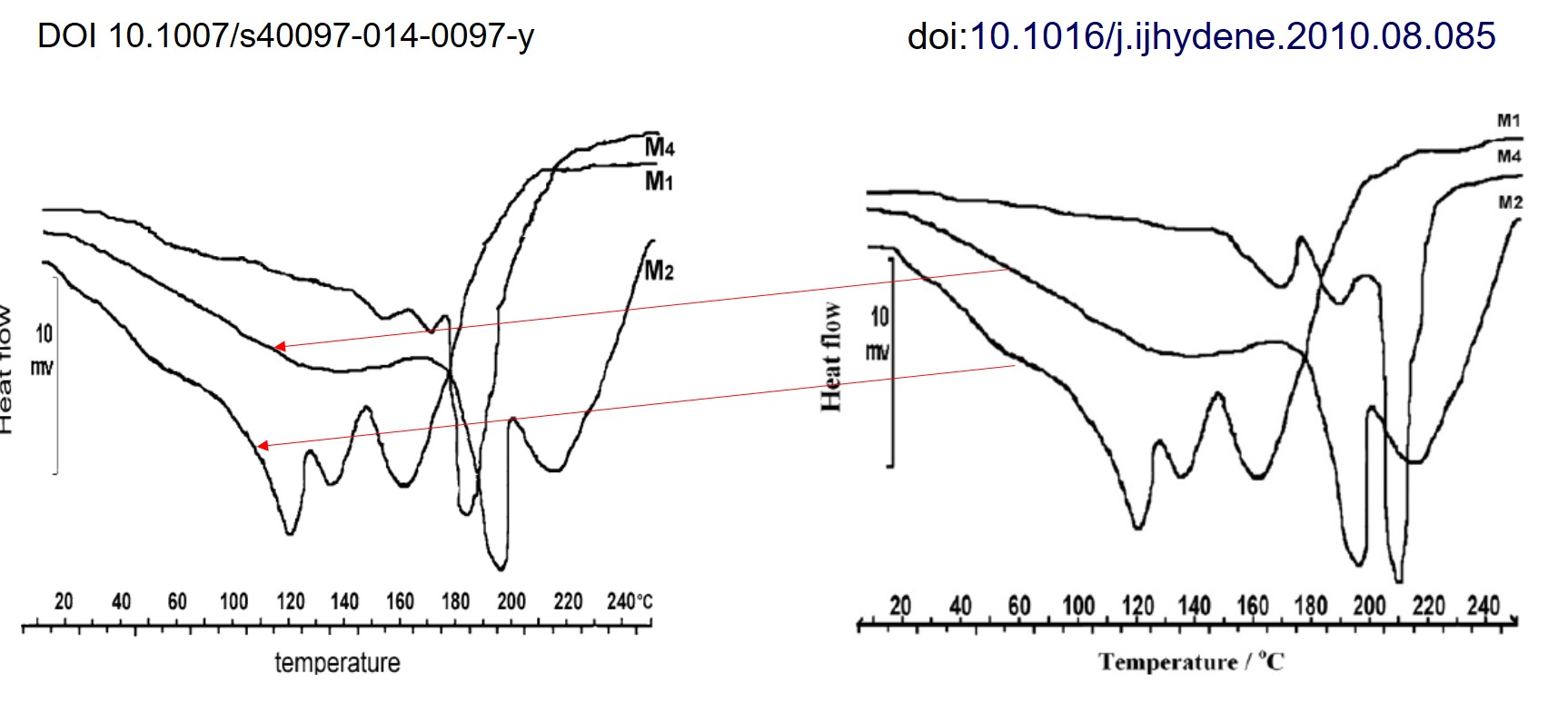
Never mind the duplication. The spectra are most obviously hand-drawn. Badly so. And these are the skills which Bonaccorso so values in his employees, that he will sue everyone who disapproves.
IIT’s Scientific Director Giorgio Metta eventually replied to me on 18 April 2023 and suggested I contact the IIT ombudsman with a formal report and then IIT will proceed with a formal investigation (or not) depending on what this ombudsman thinks of the evidence. I suggested he contacts the unnamed Ombudsman himself, and I never heard from Metta again. He certainly did not apologise for his colleague’s legal threats.
Basically, they are quite content at IIT with burning EU millions for graphene research like this.
Germans in Saudi Arabia
You surely recall the scandal in Spain where scientists assumed Saudi univeristy affiliations in return for bribes, e.g. Rafael Luque or Damia Barcelo. The scoop was published by El Pais, and much of the data was provided by the Barcelona-based consulting company SIRIS, who also published their analysis here:
- “We show that Saudi Arabia, with 109 Highly Cited Researchers in 2022 has a 5 to 10 times higher share of HCRs amongst its researchers (0.44 %) compared to countries such as Spain, Germany or France, and twice as high than Switzerland and the Netherlands, which have some of the highest share of HCRs amongst its researchers.
- The number of HCRs primarily affiliated to a Saudi Arabian institution has been growing from 27 in 2014 to 109 in 2022, while the secondary affiliations have fallen from 129 in 2014 to 10 in 2020. As a reminder, since 2014 ARWU no longer takes into account secondary affiliations for its ranking.
- 75 % of Saudi Arabian HCRs in 2022 have a second foreign affiliation; far higher than for the other countries we looked at, where foreign secondary affiliations accounted for 0-13%. The share of foreign second affiliations depends on the institution: it is especially high for King Abdulaziz University (81%) and King Saud University (82%), while it is only half as high for the King Abdullah University of Science & Technology (41%). Most Saudi Arabian universities are not concerned by this phenomenon. From the 274 HCRs affiliated to Saudi Arabian institutions between 2014-22, there were only 64 HCRs which indicated solely Saudi Arabian institutions in their affiliations.
- The 8 countries, which appeared most often in secondary affiliations of Saudi Arabian HCRs between 2014-2022 were: China (44 HCRs), Spain (19 HCRs), USA (16 HCRs), Turkey (14 HCRs), India (13 HCRs), UK (12 HCRs), Italy and Germany (both 11 HCRs). Those represent 139 HCRs out of the of the total 210 different HCRs, stemming from 41 countries, who have indicated Saudi Arabia as their primary affiliation and a foreign institution as a secondary affiliation, between 2014-2022. In relative terms, compared to the total number of HCRs in the country those numbers are particularly high for Turkey (in 2022, 67% compared to its own number of HCRs), India (13%) and Spain (11%).“
Maarten van Kampen used the SIRIS dataset to extract a list of German researchers with Saudi affiliations:
- Lutz Ackermann, chemistry professor at the University of Göttingen, Fellow with King Saud University since 2021
- Meinrat O. Andreae, emeritus professor of geosciences with Max Planck Institute for Chemistry in Mainz, with King Saud University since 2014
- Hendrik Poorter, plant scientist at Forschungszentrum Jülich, with King Saud University since 2020
- Sabry M. Shaheen, professor of Soil- and Groundwater- Management at University of Wuppertal, with King Abdulaziz University since 2022
- Armido Studer, professor of organic chemistry at University of Münster, with King Saud University since 2020
- Joerg Kudla, plant science professor at University of Münster, with King Saud University since 2019
- Michael Schloter, professor for soil ecology at Technical University (TU) Munich and Helmholtz-Center Munich, with King Saud University since 2020
- Francois Buscot, professor for soil ecology at Leipzig University and Helmholtz Center for Environmental Research (UFZ), with King Saud University, since 2020
- Klaus F. X. Mayer, plant science professor at TU Munich and Helmholtz Center Munich, with King Saud University since 2019
- Yakov Kuzyakov, former soil scientist at University of Göttingen, now at RUDN University, Russia, and affiliated with King Saud University.
- Timon Rabczuk, professor of computational mechanics at Bauhaus University of Weimar, with King Saud University since 2017. Worth noting: Rabczuk’ papers receive strange citations from known papermillers (e.g., here and here).
- Magnus Rueping, engineering professor at University of Aachen (RWTH), with King Abdullah University of Science and Technology (KAUST) since 2016.
Of course we have absolutely no reason to assume that all these German men of science took Saudi affiliations in exchange of big sweaty wads of money from a misogynous and murderous terror regime. Nah, that’s maybe what Spaniards may do, but never German professors. Rather, these fine gentlemen like Rueping and Ackermann probably altruistically seek to advance science and learning in the Middle East.
Scholarly Publishing
Subsequently removed
In January 2023, I reported in Friday Shorts about a certain Anh Tuan Hoang, associate professor at the Ho Chi Minh City University of Technology in Vietnam, whom Elsevier just recruited as the new Co-Editor-in-Chief of the journal Fuel, where Hoang already managed to dump a big steaming pile of papermill crap with masses of citations to his own papers. Hoang is of course also a close associate of Rafael Luque, the king of papermillers.
On 5 May 2023, Vietnamese news reported that Hoang was prevented from taking the chief editor position. The man is quoted (Google-translated):
“”After a period of work, due to too much work pressure, with more than 500 articles to be delivered in a month, I couldn’t do anything other than make a preliminary assessment and give feedback.
Usually, at least 10 reviewers need to be invited because the majority of reviewers decline the invitation for various reasons, making the work very stressful…
Under the work pressure as well as the role of editor-in-chief, I realized that I could not continue to take on the position of editor-in-chief of a large magazine like Fuel, so I withdrew from that position,” added Mr. Tuan.”
The article quotes Jason Chan, Elsevier’s communication manager, and I was also privy to his message:
“Dr. Hoang Anh Tuan was recently appointed as editor of FUEL but was subsequently removed from that role. As results of an on-going investigation are still pending, we are unable to provide further information.”
I also learned that the other two co-EiC of Fuel, Jillian Goldfarb and Bill Nimmo, were not aware of Hoang’s previous appointment. How clever of Elsevier!
Industry best practice
Scholarly publishers profess to be very concerned about papermills and be deploying their best experts and their most sophisticated resources to prevent papermill fraud from being published in their journals.
Let me show you exactly how this works in practice.
On 13 April 2023, the publishing giant Springer Nature announced “the launch of the first iteration of the STM Integrity hub’s papermill detection tool“:
“The detection tool is a stand-alone application that allows publishers to automatically screen uploaded papers against key indicators that suggest that the manuscript has or may have originated from a paper mill. The tool will flag any concerns, and publishers can then investigate them more fully. During the process of development, we ensured that the tool followed industry best practice and is fully legally compliant, handling submission and data privacy to the highest ethical standards.”
And this is how it works, on the example of Springer Nature’s journal family BioMedCentral (BMC):
A Call for papers at BMC Biomedical Engineering for “3D printing in prosthetics”, with Guest Editors Wenguo Cui (Shanghai Jiao Tong University School of Medicine, China), Ebrahim Mostafavi (Stanford, USA), Navid Rabiee (Murdoch University, Australia) and Abhimanyu Thakur (University of Chicago, USA).
All these highly cited gentlemen are known cheaters, in fact even papermillers.
The Highly Cited Researchers of Clarivate
“here is my advice to Clarivate: better get lost. ” – Alexander Magazinov
At the same BMC journal, this same gang is editing another special issue on a completely unrelated topic: “Antimicrobial surfaces for medical technologies”. Worth noting is that Rabiee is not just a guest editor, but a member of the editorial board editor of BMC Biomedical Engineering, Cui is even listed as the senior editor.
Rabiee is of course a close associate of Rafael Luque, here is a papermilled MDPI special issue they edited together until MDPI stopped it because it was too excessive and embarrassing.
Here are Cui’s qualifications:
Liang Cheng , Zhengwei Cai , Jingwen Zhao , Fei Wang , Min Lu , Lianfu Deng , Wenguo Cui Black phosphorus-based 2D materials for bone therapy Bioactive Materials (2020) – doi: 10.1016/j.bioactmat.2020.06.007

Or this:
Jielai Yang , Ying Han , Jiawei Lin , Yuan Zhu , Fei Wang , Lianfu Deng , Hongyu Zhang, Xiangyang Xu , Wenguo Cui Ball‐Bearing‐Inspired Polyampholyte‐Modified Microspheres as Bio‐Lubricants Attenuate Osteoarthritis Small (2020) doi: 10.1002/smll.202004519

The publisher didn’t reply.
Not 100% accurate
At MDPI, another STM member, a similar story. A year ago, in May 2022, MDPI alerted us to the dangers of papermills, citing their Head of Publication Ethics Damaris Critchlow:
“We take [possible paper mill submissions] very seriously” says Critchlow. “In all cases, we follow the guidelines from the Committee on Publication Ethics (COPE) to support an investigation. We consider it to be systematic manipulation of the peer review process“.
MDPI is fighting papermills via collaboration and technology:
“The scale of the problem is quite large and, while we can do as much as we can as an individual publisher, sometimes one publisher might identify a paper as being from a paper mill and reject that paper, but the article goes on to be accepted for publication by another publisher. It would be helpful if there were some way for publishers to be able to communicate” states Critchlow.[…]
“Technology has the potential to detect specific indicators of paper mill papers, so it is useful. However it isn’t 100% perfect, and there’s always a human needed who can make an informed judgement regarding what the technology has flagged” says Critchlow, pointing out that the process is not 100% accurate and mistakes are still made…”
And so advanced technology is deployed to recruit the worst papermillers like Mahmood Barani (Kerman University of Medical Sciences, Iran) so that his papermill fraud won’t end up with other publishers. Barani’s speciality is buying and selling masses of citations, to himself or to his fellow papermill cheaters. He often works in tandem with another papermill fraudster from Iran, Abbas Rahdar.
German Authorities on Papermills and Whistleblowing
“I am not familiar with Iranian papermills!” – Prof Dr med Henning Madry, Saarland University.
Here a rather representative Barani paper, I chose it because it was published in MDPI, its other authors are fellow papermillers Rahdar, Tapan Behl , Simona Bungau and the German professor Magali Cucchiarini-Madry (who I wrote about in the article above):
Fakhara Sabir , Mahmood Barani , Mahwash Mukhtar , Abbas Rahdar , Magali Cucchiarini , Muhammad Nadeem Zafar , Tapan Behl , Simona Bungau Nanodiagnosis and Nanotreatment of Cardiovascular Diseases: An Overview Chemosensors (2021) doi: 10.3390/chemosensors9040067
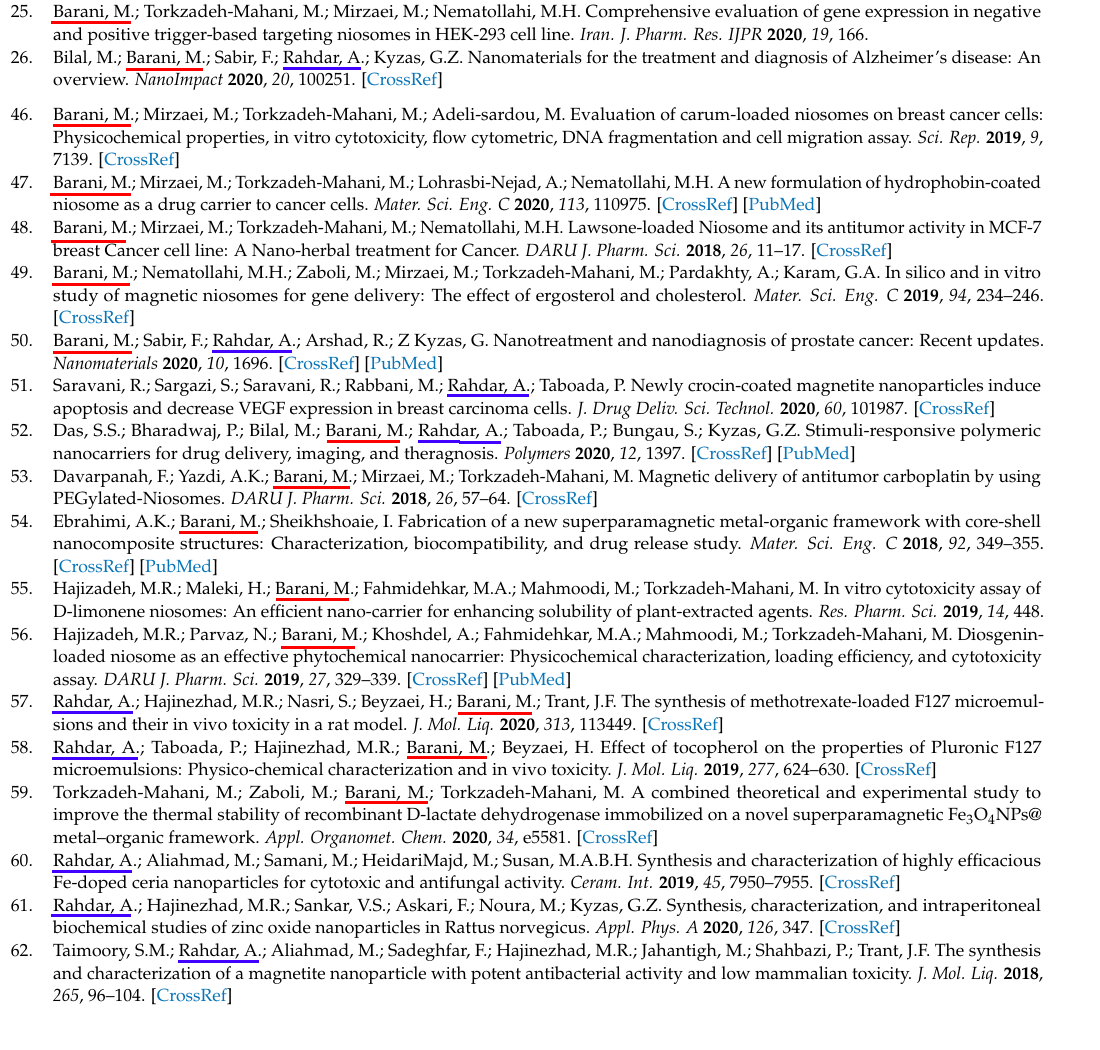
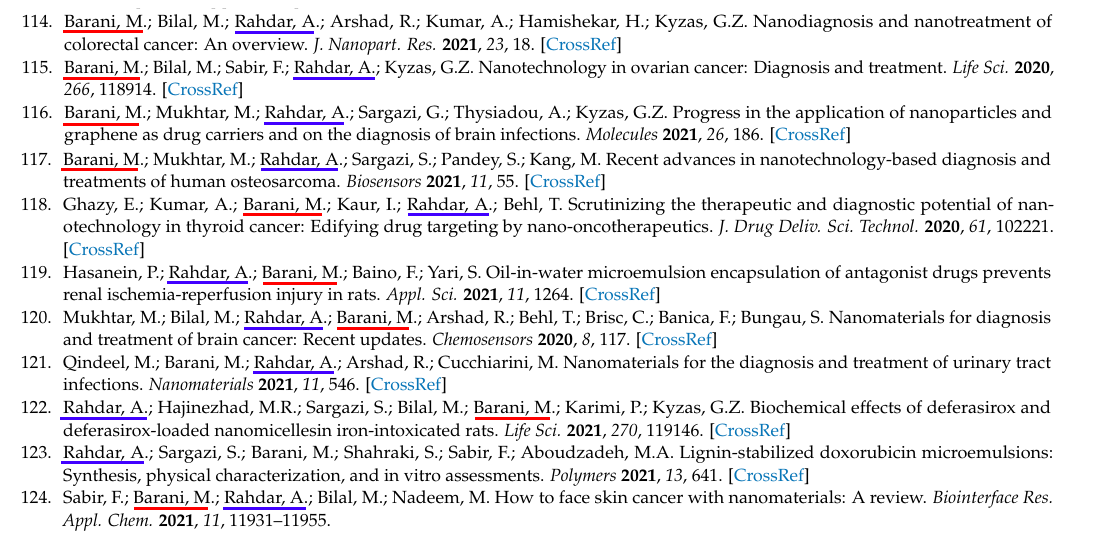
Here a case where Barani’s gang sold citations:
Gustavo Ruiz-Pulido , Dora I. Medina , Mahmood Barani , Abbas Rahdar , Ghasem Sargazi , Francesco Baino , Sadanand Pandey Nanomaterials for the Diagnosis and Treatment of Head and Neck Cancers: A Review Materials (2021) doi: 10.3390/ma14133706
Alexander Magazinov noticed blocks of references there:
“While this paper is about head & neck cancers, more general references, somewhat unexpectedly, emphasize grinding and machining applications of nanoparticles. The presence of a certain C Li on the author list of many of those might be a part of an explanation.”
MDPI were so impressed that they now opened a Special Issue “The Application of Nanomaterials in Cancer Diagnostics and Therapy” in the journal Molecules, and another Special Issue in Metals titled “Studies of Magnetic Properties of Ferrite Particles”, both guest-edited by Barani.
Training and awareness
Well, those were commercial publishers. Surely non-profit learned societies will be more careful.
Indeed! The Royal Society of Chemistry announced in September 2022 how they fight papermills:
“The ultimate goal for publishers and researchers alike is preventing the existence of paper mills in the first place, reducing the “publish or perish” culture, and ensuring the emphasis is on quality and thoroughness of research rather than quantity or perceived impact.”
The announced measures are:
- Introduced additional screening checks at submission
- Strengthened data requirements
- Increased awareness among staff
- Conducted training and awareness raising for Associate Editors
- Trained staff in detection of image manipulation
- Piloted Proofig image manipulation software
The last point is particularly funny, read about Proofig here:
Proofig – the Kolodkin-Gal family business
“Don’t let online controversies and aggressive blogs easily ruin everything you’ve worked for to build your reputation […] Whether the image issue is innocent or intentional, the outcome is still the same. Bloggers will attack that publication with image issues, which will damage your reputation and may even lead to a costly investigation. We are…
But you know what I am getting at, right?
Here is a new paper by the known papermiller Rajender S Varma in the predatory journal RSC Advances, which only recently had to retract 70 papers for papermilling:
Siavash Iravani , Rajender S. Varma MXene-based composites against antibiotic-resistant bacteria: current trends and future perspectives RSC Advances (2023) doi: 10.1039/d3ra01276j
Siavash Iravani is the papermilling associate of Navid Rabiee, Mahmood Barani and Abbas Rahdar whom you met above. And so is Rajender Varma, who lost his job at the Palacky University Olomouc in Czechia because of my reporting:
I, Rajender Varma, Highly Cited Researcher
“I could not comprehend the situation where a university picks up on individuals with an extraordinary and sterling performance and basically destroy one of the top European institutions. ” – Raj Varma
PubPeer records reveal that papers by Iravani and Varma are mostly citation scams to benefit themselves or their friend Rabiee. Like here:
Navid Rabiee , Siavash Iravani , Rajender S. Varma Biowaste-Derived Carbon Dots: A Perspective on Biomedical Potentials Molecules (2022) doi: 10.3390/molecules27196186

Here a nice recently flagged Varma paper:
Milad Nayebi , Amir Faraji , Ashkan Bahadoran , Zhian Jamal Othman , Soheila Arghavani , Pouya Ghamari Kargar, Seyed Mehrzad Sajjadinezhad , Rajender S. Varma TiO2/g-C3N4/SO3H(IL): Unique Usage of Ionic Liquid-Based Sulfonic Acid as an Efficient Photocatalyst for Visible-Light-Driven Preparation of 5-HMF from Cellulose and Glucose ACS Applied Materials & Interfaces (2023) doi: 10.1021/acsami.2c20480




Basically, RSC did all the required checks, training and awareness, and concluded that yes, Varma and Iravani are perfectly trustworthy scholars.
New tools
Science magazine is desperate. In March 2020, they ran a successful operation of stripping Smut Clyde and others of all credit for their investigation into Chinese papermills, all because these sleuths work with that horrible satanic monster Leonid Schneider. Science knowingly mis-attributed my colleagues’ work to Jennifer Byrne and Jana Christopher, and this is why for the next two years this duo was celebrated throughout world’s media, basically for each new papermill Smut Clyde kept uncovering. Read here how it happened:
Editors and other real papermill heroes
“Long story short, we investigated our published papers and then retracted those with data integrity issues. That is it.” – Dr Heather Smith, Editor-in-Chief
However, with time most journalists and their readers understood that Byrne’s and Christopher’s contribution to actual papermill sleuthing was minimal at best, while the Aussie professor and German publishing exec unfortunately never attempted to set the record straight about who the real sleuths were. So by now, Byrne and Christopher themselves aren’t mentioned anymore when papermills are spoken about.
Science needed new heroes before its readers discover For Better Science and its evil satanic contributors.
And their new hero is Bernhard Sabel.
I wrote about this German professor several times, see in particular this Friday Shorts. Among the crazy things this University of Magdeburg psychologist did, was to cure two women with electrical currents from COVID-19 after-effects on the brain (Sabel et al 2021) and to rename papermills into “Criminal science publishing gangs“, together with his German colleague seeking (and spectacularly failing) to solve the papermill problem of his pharmacology journal. Sabel also founded a Science Integrity Alliance of which he is the president and quite possibly the only (active) member.
An attractive and “natural” target for fraudsters
“In the various excellent texts on paper mills the question is discussed why Naunyn-Schmiedebergs Archives of Pharmacology has become a target for fake papers. I oppose the assumption that we simply want to fill pages with pseudo-scientific content. We actually look for quality and good science.” – Prof Dr Roland Seifert, Editor-in-Chief
Now, to Science. Who informed us on 9 May 2023:
“Fake scientific papers are alarmingly common
But new tools show promise in tackling growing symptom of academia’s “publish or perish” culture”
And Sabel is such a tool.
“When neuropsychologist Bernhard Sabel put his new fake-paper detector to work, he was “shocked” by what it found. After screening some 5000 papers, he estimates up to 34% of neuroscience papers published in 2020 were likely made up or plagiarized; in medicine, the figure was 24%. Both numbers, which he and colleagues report in a medRxiv preprint posted on 8 May, are well above levels they calculated for 2010—and far larger than the 2% baseline estimated in a 2022 publishers’ group report.
“It is just too hard to believe” at first, says Sabel of Otto von Guericke University Magdeburg and editor-in-chief of Restorative Neurology and Neuroscience. It’s as if “somebody tells you 30% of what you eat is toxic.” […]
Sabel’s tool relies on just two indicators—authors who use private, noninstitutional email addresses, and those who list an affiliation with a hospital. It isn’t a perfect solution, because of a high false-positive rate.”
This is Sabel’s preprint:

Bernhard A. Sabel, Emely Knaack, Gerd Gigerenzer, Mirela Bilc Fake Publications in Biomedical Science: Red-flagging Method Indicates Mass Production medRxiv (2023) doi: 10.1101/2023.05.06.23289563
There is no tool. Sabel and his team write:
“three indicators were identified: “author’s private email”, “international co-author” and “hospital affiliation”. These were used to analyze 15,120 PubMed®-listed publications”
It seems they (Sabel’s two students) did it all manually, there is no mention of any scripts or other software use. His other coauthor Gerd Gigerenzer is a retired director of the Max Planck Institute for Human Development in Berlin and author of pop science books on the topics of statistics and decision making. Gigerenzer most certianly didn’t do any internet searches.
But the preprint lists one of the datasets Sabel et al used for validation.
“ii. n=100 Tadpole paper mill items (https://docs.google.com/spreadsheets/d/1KXqTAyl4j-jVorFPMD2XRpr76LcIKJ0CVyIvRj0exYQ/edit#gid=0)”
The link goes to Smut Clyde’s spreadsheet about this papermill, one must credit Sabel for referencing it:
The full-service paper mill and its Chinese customers
An investigation by Elisabeth Bik, Smut Clyde, Morty and Tiger BB8 reveals the workings of a paper mill. Its customers are Chinese doctors desperate for promotion. Apparently even journal editors are part of the scam, publishing fraudulent made-up science.
Science must really be desperate for heroes if they celebrate Sabel and his “tool” as a breakthrough in the war against papermills. Otherwise, any moment now Science readers will learn about the satanic gang of Smut Clyde, Tiger BB8, Alexander Magazinov, Parashorea, Mu Yang, Aneurus, Morty, Cheshire, Maarten van Kampen and … For Better Science!
Also the German daily FAZ celebrated on 11 May 2023 Sabel’s technological breakthrough. His methodology is described (translated):
“Sabel, editor of a journal of neurology, sent out a questionnaire. This questionnaire was sent to the authors from a sample of suspect articles and to authors from a sample of non-suspect articles for control purposes. Suspicious authors were, for example, those who provided a private e-mail with their manuscript and did not have an international partner. The assumption was: authors of fake publications are unwilling to provide original data and less willing to answer specific questions. Despite reminders and warnings that non-response or insufficient response could trigger retraction of the article, the response rate from suspected authors was only 45 percent compared to 96 percent in the control group.”
On which authority they threatened authors with retraction is something I didn’t get.
Retraction Watchdogging
Built with at least 14 panels of different gels
A paper from Strasbourg, France, was retracted now to celebrate its 18th birthday. In November 2022, it received an Expression of Concern.
Céline Marban , Laetitia Redel , Stella Suzanne , Carine Van Lint , Dominique Lecestre , Sylvette Chasserot-Golaz , Mark Leid , Dominique Aunis , Evelyne Schaeffer , Olivier Rohr COUP-TF interacting protein 2 represses the initial phase of HIV-1 gene transcription in human microglial cells Nucleic Acids Research (2005) doi: 10.1093/nar/gki529



The Retraction notice appeared on 9 May 2023, almost exactly 18 years after the original publication:
“The Editors were alerted in June 2022 about potential issues with Figures 3B, 5C and 6B as detailed below.
Figure 3B: GST bands in the lower two panels appear to be identical.
Figure 5C: There may be signs of splicing around the two COUP-TF bands.
Figure 6B: Lanes 1 and 5 appear to be similar after horizontal flip.
The Editors began their investigation, during which the authors confirmed they no longer have the original, underlying data for any figure contained in the published article, as the research was conducted approximately 20 years ago. The authors also voluntarily disclosed that the upper panels of Figure 5B had ‘been built with at least 14 panels of different gels’.
An Expression of Concern was posted in November 2022. The Editors subsequently referred the matter to the institution where the research was conducted for investigation. The institution enlisted the help of independent external experts to scrutinize the figures objectively. They concluded:
The allegations are plausible and could involve the manipulation of several published images beyond accepted peer-reviewed methodological standards.
In the absence of the original gels, it is not possible to validate some of the conclusions of the article based solely on the experimental data produced in the article.
They are unable to lift all doubts about the conclusions of the article.
Based on their own assessment of the figures and the external experts’ reports, the Editors have lost confidence in the integrity of the data presentation in this paper and are ultimately retracting it.”
The Strasbourg Swamp
You know Voinnet, but now meet other great life scientists of Strasbourg: Drouard, Loeffler, Boutillier, Mr and Mrs Egly, and many others.
In 2014, the same two HIV researchers, the University of Strasbourg professor Olivier Rohr and the University Brussels professor Carine Van Lint corrected another paper in the same journal, despite a fake gel:
Valentin Le Douce , Laurence Colin , Laetitia Redel , Thomas Cherrier , Georges Herbein , Dominique Aunis , Olivier Rohr , Carine Van Lint, Christian Schwartz LSD1 cooperates with CTIP2 to promote HIV-1 transcriptional silencing Nucleic Acids Research (2012) doi: 10.1093/nar/gkr857

To be fair, the journal was under a different leadership back then and had a very different attitude towards research fraud.
Good work by Nucleic Acids Research, which can’t be said of Scientific Reports. In previous Friday Shorts I mentioned another fraudulent paper by Rohr and Van Lint (Kumar et al 2016) which the journal’s deputy editor refused to do anything about, not even correction, because the authors “were able to provide data that supported the legitimacy of this image“.
Van Lint seems to have a very low concept of research ethics. Here is she with another dishonest colleague, University of Franche-Comté professor Georges Herbein, on a paper with none other but the infamous mega-fraudster Bharat Aggarwal:
Audrey Varin , Sunil K. Manna , Vincent Quivy , Anne-Zélie Decrion , Carine Van Lint, Georges Herbein, Bharat B. Aggarwal Exogenous Nef protein activates NF-kappa B, AP-1, and c-Jun N-terminal kinase and stimulates HIV transcription in promonocytic cells. Role in AIDS pathogenesis Journal of Biological Chemistry (2003) doi: 10.1074/jbc.m209622200

I’d say anyone seen in the same room with that curcumin crook Aggarwal must be a research fraudster, but this is just my unqualified opinion:
Audrey Varin , Anne-Zélie Decrion , Emmanuelle Sabbah , Vincent Quivy , Joséphine Sire , Carine Van Lint, Bernard P. Roques , Bharat B. Aggarwal , Georges Herbein Synthetic Vpr protein activates activator protein-1, c-Jun N-terminal kinase, and NF-kappaB and stimulates HIV-1 transcription in promonocytic cells and primary macrophages Journal of Biological Chemistry (2005) doi: 10.1074/jbc.m502211200

I don’t know what the exact relationship of Van Lint and Herbein is, but it certainly involves passionate data fudgery.
Ulrich Mahlknecht , Isabelle Dichamp , Audrey Varin , Carine Van Lint, Georges Herbein NF-kappaB-dependent control of HIV-1 transcription by the second coding exon of Tat in T cells Journal of Leukocyte Biology (2008) doi: 10.1189/jlb.0607405

Fraudulent HIV research, how nice. Well, for the fraudsters it is nice, not for the AIDS sufferers. My suggestion to Nucleic Acids Research is to retract this paper by Van Lint as well:
Véronique Goffin , Dominique Demonté , Caroline Vanhulle , Stéphane De Walque , Yvan De Launoit , Arsène Burny , Yves Collette , Carine Van Lint Transcription factor binding sites in the pol gene intragenic regulatory region of HIV-1 are important for virus infectivity Nucleic Acids Research (2005) doi: 10.1093/nar/gki720


Van Lint’s Belgian university hasn’t replied to my email yet. I asked if there ever was an investigation.
Admitted, orally and in writing
Cell Press retracted a paper, by English bigwigs no less, and I am worried now if they are unwell or something.
Xin-Peng Dun , Lauren Carr , Patricia K. Woodley , Riordan W. Barry , Louisa K. Drake , Thomas Mindos , Sheridan L. Roberts , Alison C. Lloyd , David B. Parkinson Macrophage-Derived Slit3 Controls Cell Migration and Axon Pathfinding in the Peripheral Nerve Bridge Cell Reports (2019) doi: 10.1016/j.celrep.2018.12.081


The Retraction notice future-dated 30 May 2023 states (highlights mine):
“This article has been retracted at the request of the authors. This paper reported a role for Slit-Robo signaling in the control of axon guidance during peripheral nerve regeneration. The first author has admitted, orally and in writing, to the fabrication of data, unknown to other authors, and is solely responsible for this fabrication. Based on reports from the scientific community, the authors began an investigation of data and procedures in the paper. They concluded that the paper contains fabrications of data in Figure 2, panels K and O. For panel K, the image for Robo2 was copied from another publication by the first author (Figure 12 of Carr et al., 2017, PLoS ONE 12, e0172736, https://doi.org/10.1371/journal.pone.0172736). For panel O, data were taken from other PCR experiments. While the authors have reproduced and confirmed the data for panel O, given the circumstances, they believe that the most responsible course of action is to retract the paper. The authors sincerely apologize to the scientific community for any inconvenience resulting from the publication and retraction of this manuscript.”
At least they didn’t upload a confession video of Xin-Peng Dun, now professor at Hubei University of Science and Technology in China, begging for forgiveness… The retraction was announced in July 2022 by Plymuth University professor David B. Parkinson on PubPeer:
“We are grateful for bringing this to our attention. “An investigation was carried out and action has been taken by the University against the individual concerned. The data in Figure 2O was however reproduced by another researcher and demonstrated the same pattern of expression.“
But I would like to talk about the significant co-author Alison Lloyd, who was appointed in 2020 as new Director of the MRC Laboratory for Molecular Cell Biology at UCL. The then-director of MRC, Fiona Watt, was exposed as a bully in 2021 yet still got appointed as EMBO director (read here). And UCL! That’s where they specialise on convincing foreigners to accept all the blame for white Englishpeople’s misdeeds.
UCL trachea transplant inquiry: scapegoating, obfuscation and a lost nose
In 2017, UCL invited an external expert commission to investigate the deadly trachea transplants performed by the former UCL honorary professor Paolo Macchiarini. An already sacked UCL nanotechnology professor, Alexander Seifalian, whose lab made the two UCL plastic POSS-PCU tracheas in 2011, was announced as the main culprit on UCL side. All this despite Seifalian’s…
The above was not Lloyd’s first retraction, but second.
Daniel Rubio , Javier Garcia-Castro , María C. Martín , Ricardo De La Fuente , Juan C. Cigudosa , Alison C. Lloyd , Antonio Bernad Spontaneous human adult stem cell transformation Cancer Research (2005) doi: 10.1158/0008-5472.can-04-4194
“Here we show that although they can be managed safely during the standard ex vivo expansion period (6-8 weeks), human mesenchymal stem cells can undergo spontaneous transformation following long-term in vitro culture (4-5 months). This is the first report of spontaneous transformation of human adult stem cells, supporting the hypothesis of cancer stem cell origin.”
It made a big wave 18 years ago, and right away proven irreproducible. Imagine the protests by all these intenrational scientists who wasted their time trying to reproduce fraudulent results. The Retraction notice from 2010 stated:
“Upon review of the data published in this article, the authors have been unable to reproduce some of the reported spontaneous transformation events and suspect the phenomenon is due to a cross-contamination artifact. Five of the seven authors have agreed to the retraction of this paper.”
Lloyd did not agree. Despite the retraction 13 years ago, the study is still being cited, with now over 1502 citations.
Rest assured that if toruble should ever arsie again, guilty foreigners will be made admit their sole responsibility for faking these papers from Lloyd’s lab:
Philip J. Mitchell , Elena Perez-Nadales , Denise S. Malcolm , Alison C. Lloyd Dissecting the contribution of p16(INK4A) and the Rb family to the Ras transformed phenotype Molecular and Cellular Biology (2003) doi: 10.1128/mcb.23.7.2530-2542.2003

This one features David Parkinson whom you met above, extracting confessions:
Marie C Harrisingh , Elena Perez-Nadales , David B Parkinson , Denise S Malcolm , Anne W Mudge , Alison C Lloyd The Ras/Raf/ERK signalling pathway drives Schwann cell dedifferentiation The EMBO Journal (2004) doi: 10.1038/sj.emboj.7600309



Bloody forinners! Oh well, we still have the lovely Professor Lloyd as the role model for all Women in STEM in the United Kingdom.
The authors continue to believe
In Friday Shorts from January 2023, I reported about German plant scientists who were really reluctant to retract a problematic paper. They now retracted it.
In November 2019, concerns were raised about this plant biology study:
Yihan Dong , Marleen Silbermann , Anna Speiser , Ilaria Forieri , Eric Linster , Gernot Poschet , Arman Allboje Samami , Mutsumi Wanatabe , Carsten Sticht , Aurelio A. Teleman , Jean-Marc Deragon , Kazuki Saito , Rüdiger Hell , Markus Wirtz Sulfur availability regulates plant growth via glucose-TOR signaling Nature Communications (2017) doi: 10.1038/s41467-017-01224-w

The lead author is Marcus Wirtz, group leader in the lab of the University of Heidelberg professor Rüdiger Hell. On PubPeer, Wirtz insisted the gel band was not duplicated, in an e-mail to me he seems to hint that raw data was unavailable. Other problematic figures were reported.
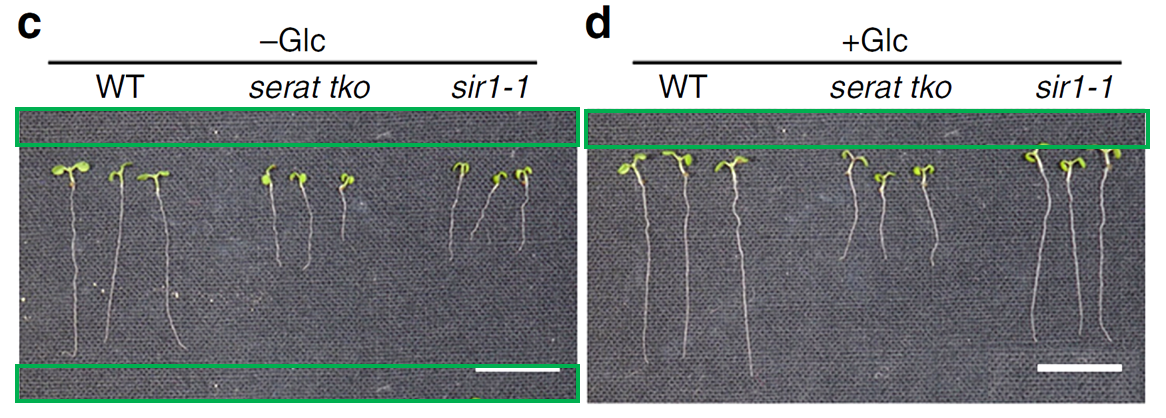
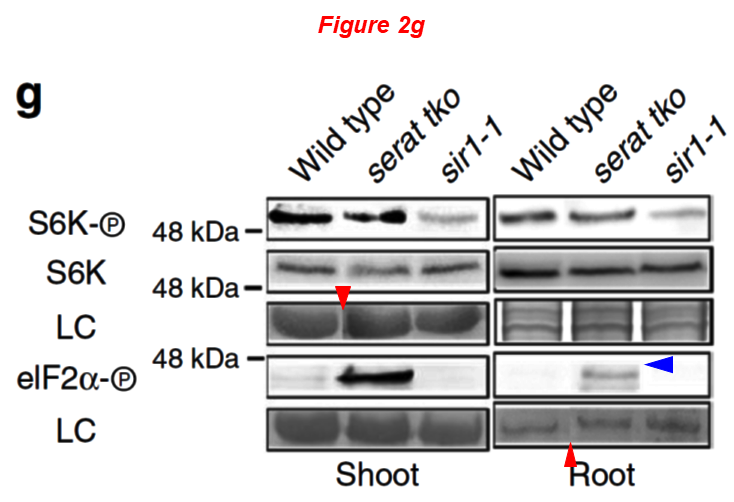
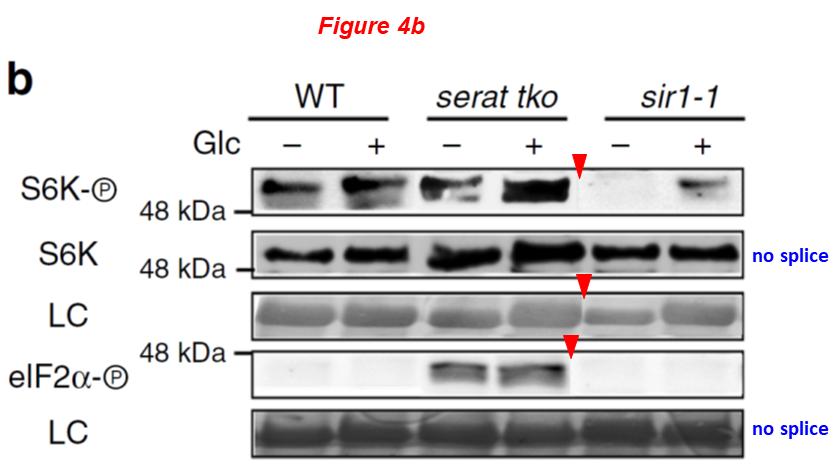
On 4 May 2023, this Retraction notice was issued:
“The authors are retracting this Article after they became aware that Fig. 2g, 3a, 3d, 4b-d, 5a, 5d, and Supplementary Fig. 1a were prepared in an inappropriate manner.
The blot images shown in Fig. 2g, 3a, 3d, 4b, 5a and 5d assess TOR activity and autophagy, and were produced by assembling different sections of the original blot images in a way that did not indicate the splicing and merging of lanes, and in some cases the loading controls shown did not correspond to the correct gels/blots. In addition, background sections of the plant images shown in Fig. 4c-d had been duplicated. Finally, the gel images shown in Supplementary Fig. 1a to confirm plant genotypes contain internal duplications and the original data cannot be found. Subsequent genotyping data has confirmed the genotype of the plants and the authors continue to believe that the data on TOR activity and autophagy are supported. The authors maintain full confidence in the metabolic profiling and transcriptomic data in the paper. Nevertheless, they recognize that the irregularities in image presentation could collectively decrease confidence in the conclusions.
The authors apologise to the scientific community for any confusion caused by these errors. All authors agree to this retraction.”
Fun fact: Rüdiger Hell was co-author on the eLife paper from the lab of his Heidelberg colleague Karin Schumacher, it was retracted for fraud soon after publication.
M Görkem Patir-Nebioglu , Zaida Andrés , Melanie Krebs , Fabian Fink , Katarzyna Drzewicka , Nicolas Stankovic-Valentin , Shoji Segami , Sebastian Schuck , Michael Büttner , Rüdiger Hell , Masayoshi Maeshima, Frauke Melchior, Karin Schumacher Pyrophosphate modulates plant stress responses via SUMOylation eLife (2019) doi: 10.7554/elife.44213

Initially, Schumahcer tried to counter the allegations with “raw” data, which was then proved by Anerus Inconstans as forged, which prompted Schumachcer to announce a retraction. The first author Gorkem Patir-Nebioglu received the full blame in the retraction notice from February 2019. The case was briefly mentioned here:
Caught in a SNARE
“You can be assured that neither I nor any of my colleagues […] would tolerate any data manipulation.” – Natasha Raikhel
Maybe Schumacher is not a good influence. As it happens, the newly appointed Rector of the University Heidelberg, Frauke Melchior, was a co-author on that retracted eLife paper, too.
The three surviving authors
The Italian cheater Maurizio Sabbatini retracts a paper. And he retracts it in style. You can read about Sabbatini and his cheating mentor Francesco Amenta in this article by Aneurus Inconstans:
The microscopic talent of Prof Amenta
“Professor Amenta is truly a renaissance man and a knowledge powerhouse according to his colleagues and students. Amenta’s sole focus in life is the creation and dissemination of knowledge”
This is the retracted paper, in an Italian journal no less:
F. Mignini , M. Sabbatini , V. D’Andrea , C. Cavallotti Intrinsic innervation and dopaminergic markers after experimental denervation in rat thymus European Journal of Histochemistry (2010) doi: 10.4081/ejh.2010.e17






Now, the Retraction notice from 8 May 2023:
“On behalf of the coauthors and with much regret, I must retract our publication entitled “Intrinsic innervation and dopaminergic markers after experimental denervation in rat thymus” published in European Journal of Histochemistry 2010;54(2):e17 for the following reason:
Unfortunately, now, after thirteen years, we have realized that some microphotographs published in the paper have been processed to improve the presentation of the images.
The three surviving authors of the paper agree that the processing of the presentation images is against the COPE Ethical Editorial Standard, although the presentation images do not alter the integrity of methodological procedures and the results of the research work, obtained from the direct analysis of slides under microscope and rigorous statistical analysis of data; therefore, we, the authors of the above indicated paper, request the retraction of the publication.We apologize for what happened.
Maurizio Sabbatini
Dip. di Scienze e Innovazione Tecnologica (DISIT)
Università del Piemonte Orientale
Alessandria, Italy”
Admit it, this is very elegant. Sabbatini, the hero of reserach integrity. And conclusions are unaffected of course. And it also sounds as if the “three surviving authors” had nothing to do with the forgery and thus blame Carlo Cavallotti, who died in 2021.
The extra joke is that a member of the editorial and managing boards of European Journal of Histochemistry, the man who approved this retraction notice, is Daniele Tomassoni, regular coauthor on the fake papers of Amenta and Sabbatini. Here is one of those:
Maurizio Sabbatini , Amedeo Leonardi , Rodolfo Testa , Daniele Tomassoni, Lucia Vitaioli , Francesco Amenta Effects of Dihydropyridine-Type Ca 2+ Antagonists on the Renal Arterial Tree in Spontaneously Hypertensive Rats Journal of Cardiovascular Pharmacology (2002) doi: 10.1097/00005344-200201000-00005
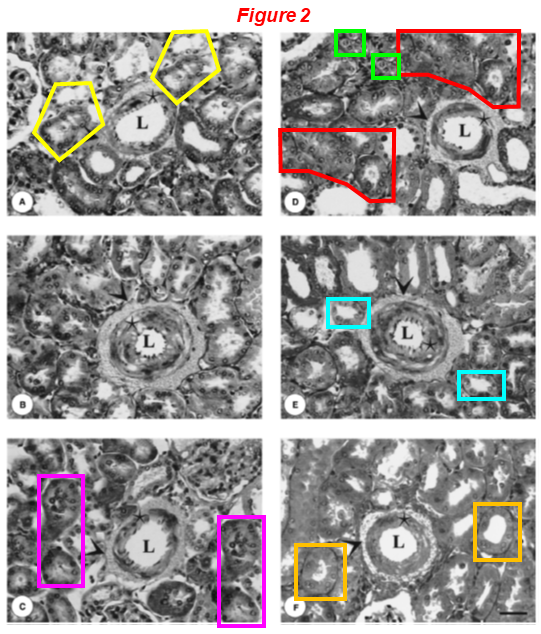
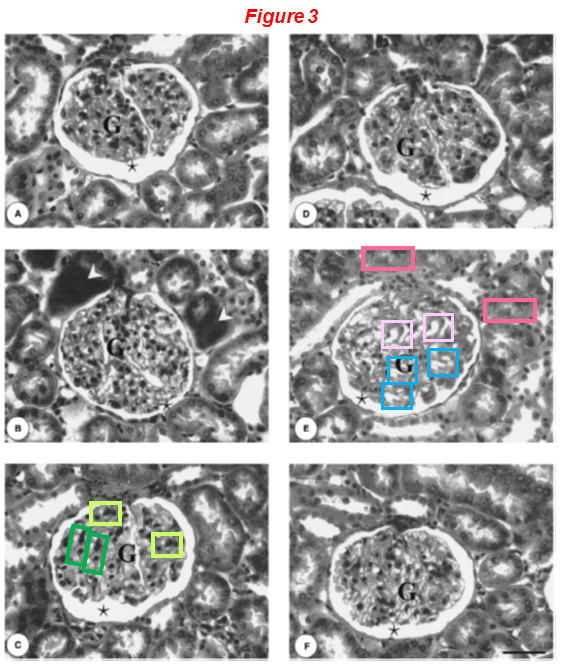
Back in January 2023, Sabbatini explained on PubPeer:
“Many microphotograph from stained histological sample are the result of image software processing to improve the contrast and make the details of the organ’s microanatomy more visible. This process can eliminate some differences in microanatomical details by making parts of the organ apparently similar or much more similar than it actually is.“
That’s because all those authors are still alive and kicking.
News in Tweets
- McMaster University in Canada releases its findings against the behavioral ecologist Jonathan Pruitt: “The Hearings Committee “the Committee” was satisfied, having considered the relevant facts submitted by the parties, that McMaster University’s Research integrity Policy {“the Policy”) was breached by Dr. Pruitt. The facts provided to the Committee were sufficient to confirm, on a balance of probabilities, that Dr. Pruitt generally failed to meet the requirements expected of a tenured professor under the Policy when conducting research. Specifically, the Committee found that Dr. Pruitt engaged in fabrication and falsification which breached the Policy. […] In brief, the facts submitted established that data and sequences of data were duplicated in all three papers. The Committee was also satisfied that Dr. Pruitt engaged in fabrication and falsification with respect to whether spiders were collected for the study conducted and concerning which spiders were used and whether the assays were conducted to support the papers. The positions advanced by Dr. Pruitt to explain the data and sequence duplication were not accepted by the Committee. The Committee also accepted that there are no statistical or biological explanations for the types of duplication observed in the papers.“
Spiderman’s lawyer is having you for dinner tonight
Spider researcher Jonathan Pruitt is accused by his coauthors of data manipulations, after 3 retractions they demand more. A lawyer’s letter was supposed to stop that, but Pruitt tells me: “I’m happy for folks to engage in public discourse about my data integrity””
- In this regard, ZME Science informs us on 6 May 2023 in an article about spiders: “Jonathan Pruitt, an assistant professor who studies spiders at the University of California at Santa Barbara, noticed that all of these eggs were the exact same size and that spiderlings hatched and molted at roughly the same time. He found it odd and in a study published in 2016, Pruitt and fellow biologists conducted an experiment in which they varied the spider eggs’ rate of development by adjusting the temperature.” The linked paper is not authored by Pruitt. Who was never professor at UCSB, before or after McMaster University sacked him. The magazine insists however that “ZME Science has become one of the go-to sources for trusted science news on the web.“
- The Chronicle on the topic of carbon capture science as shilling for Big Oil: “Stanford University’s Doerr School of Sustainability recently unveiled its first institutionwide research focus: greenhouse-gas removal. Taking tons of carbon dioxide out of the atmosphere will be “essential” to limiting global warming, as a news release last month explained, and ideas will be marshaled from across the school to get it done. What the announcement didn’t mention was that the choice of topic had been shaped by meetings organized and attended by representatives of some of the world’s biggest oil and gas companies — Shell, ExxonMobil, TotalEnergies — as well as Bank of America, a top financier of the industry […] Through Stanford’s Strategic Energy Alliance, an academic-industry partnership, those four companies have sponsored carbon dioxide removal and storage research by Chris Field, one of the faculty members who helped organize both workshops. He is also a director of Stanford’s Carbon Removal Initiative, a newly formed research group, which co-hosted the events.“
- A newly published Lancet paper “The global burden of cancer attributable to risk factors, 2010–19: a systematic analysis for the Global Burden of Disease Study 2019” with around a thousand of authors, unusually many of them Iranian, and some are known fraudsters and papermillers. Javad Sharifi-Rad: ““discoverer” of some curious medical phenomena such as *peevish inside disorder* and *fly slack*“, Mohammad Reza Saeb: “a “chemist” from the cluster of Rafa Luque, Raj Varma and similar crook“, Khalid Mehmood: “an “expert” in drawing correlations between carbon dioxide emissions, urbanization rates, GDPs and whatnot. While his nominal field is full of fraud and citation stacking, the relation to the Global Burden of Disease is obscure“, Ebrahim Mostafavi: “a nano-fabricator from the cluster of TJ Webster. He has a significant PubPeer record“.
- Spandidos retraction from 8 May 2023 for Wang et al 2014 “Subsequently to the publication of the article, an interested reader drew to the authors’ attention that certain of the data panels showing the results of cell migration and invasion assays in Figs. 5A and 6C were overlapping, suggesting that the data were derived from the same original source, even though they were selected to represent the results from differently performed experiments. The authors requested that a corrigendum be published to rectify this problem; however, after having conducted an independent analysis of the data in the Editorial Office, we have noticed that the data shown in Figs. 5A and 6C are strikingly similar to data appearing in different form in other articles published in another journal, mainly written by different authors at different research institutions.“
Spandidos and the Paper Mill
Papermills run by Chinese universities and funding a notorious Greek publisher. Smut Clyde tells it all!
- Retraction from 26 April 2023 for Naseroleslami et al 2022: “After publication, concerns were raised regarding highly similar areas in Fig. 2 MI/R + SIM. The authors have provided the underlying raw data to address these concerns; however, further checks by the Publisher have revealed that a number of areas in the published images in Fig. 2 are different from those in the original images. Additionally, the bar graphs in Figs. 1, 3 and 4 do not accurately represent the data.”
- Wrong link, but leads to another bad case. Frontiers already issued a Corrigendum to this papemill fabrication Shah et al 2019, where
authorpapermill customer was added after publication: “Phil-Ok Koh was not included as an author in the published article. The corrected Author Contributions Statement appears below. The authors apologize for this error and state that this does not change the scientific conclusions of the article in any way. The original article has been updated.”
- Guillaume Cabanac on MDPI paper Tsai et al 2023: “The phrase “Regenerate Response” is the label of a button in ChatGPT, an AI chatbot that generates text according to a user’s question/prompt [..] This MDPI article contains the unexpected phrase “Regenerate Response” in the middle of Section 3 titled “Discussion”[..] That article does not contain any occurrence of ‘ChatGPT,’ say in the method section or in the acknowledgments, as recommended in this Nature Editorial. Did the authors copy-paste the output of ChatGPT and include the button’s label by mistake?“
I thank all my donors for supporting my journalism. You can be one of them!
Make a one-time donation:
I thank all my donors for supporting my journalism. You can be one of them!
Make a monthly donation:
Choose an amount
Or enter a custom amount
Your contribution is appreciated.
Your contribution is appreciated.
DonateDonate monthly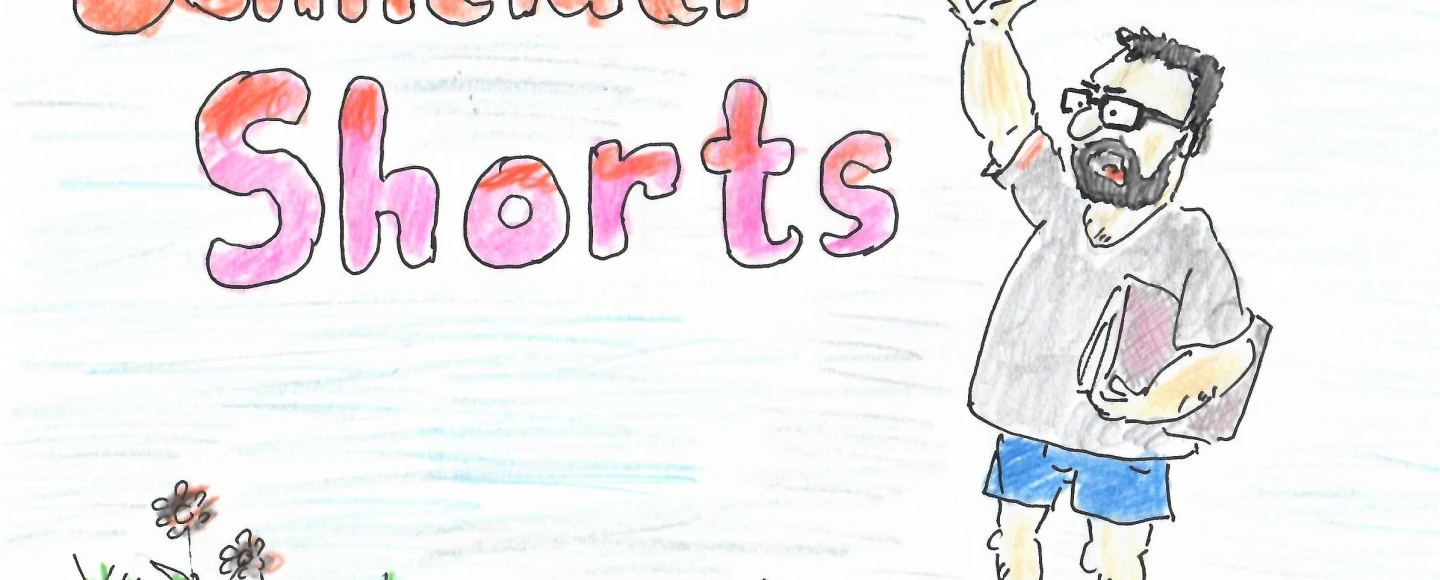





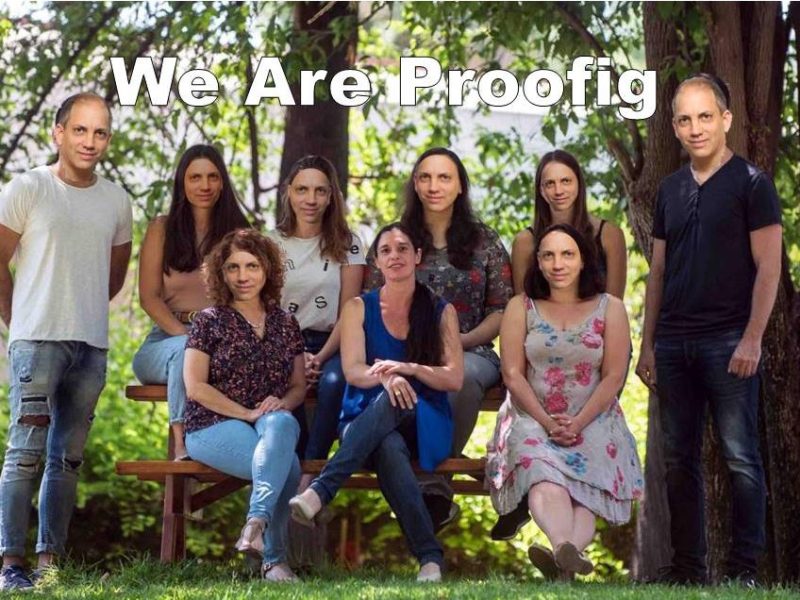
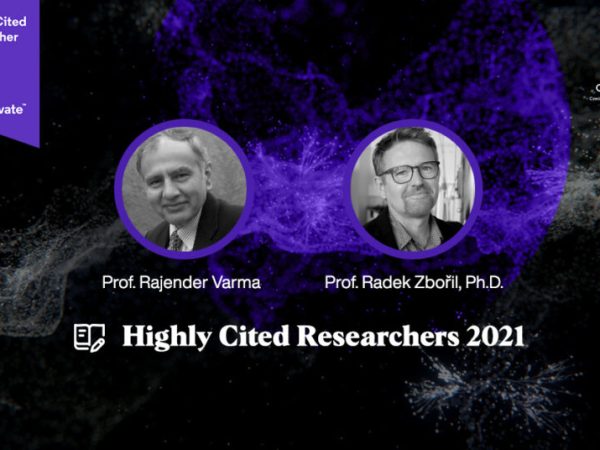


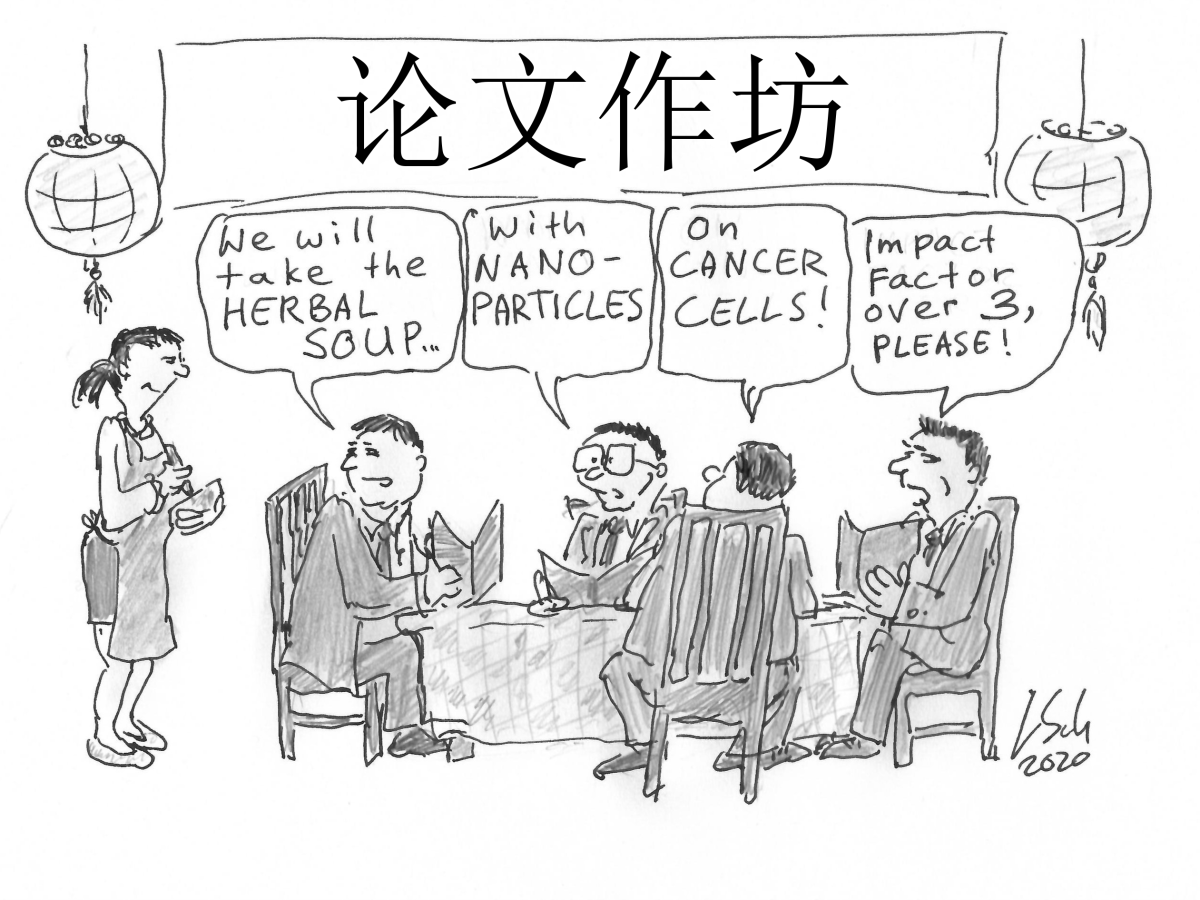
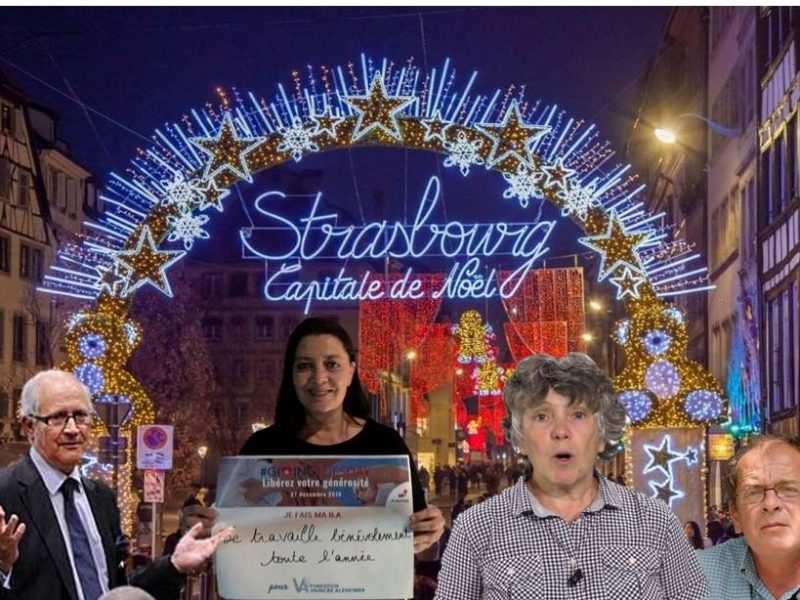






First!
LikeLike
Re: the Wirtz paper. The authors say, “The authors apologise to the scientific community for any confusion caused by these errors. All authors agree to this retraction.” Based on the number of commentors on the PubPeer thread, I’m not sure the scientific community was as confused as were the authors.
LikeLiked by 1 person
Also funny that first author Yihan Dong is now postdoc at IBMP Strasbourg, the place of mega-cheaters Olivier Voinnet and Patrice Dunoyer (now luckily sacked), and many others.
LikeLike
Huh! Among those Germans with Saudi affiliations, I spot Jörg Kudla! He has 7 entries in Pubpeer and was already featured in Leonid’s article on Pedro Rodriguez and Julia Santiago:
LikeLike
The name sounded familiar, but I forgot to search my own site.
LikeLiked by 1 person
See also https://www.wur.nl/nl/nieuws/wur-start-onderzoek-naar-buitenlandse-affiliaties-1.htm
Copy/pasted from https://www.volkskrant.nl/nieuws-achtergrond/saoedische-universiteit-betaalt-wetenschappers-in-nederland-om-universiteitenranglijst-te-manipuleren~b25e17d9/ :
“Ook Vincenzo Fogliano, hoogleraar levensmiddelentechnologieën aan de WUR, vermeldde van 2018 tot en met 2020 ten onrechte de KSU als eerste werkgever in de ‘highly cited researchers’-lijst van het Britse bedrijf Clarivate.”/// “Het schuurt op zijn minst, zo’n prestigeafspraak met een Saoedische instelling, vindt ook emeritus hoogleraar Teun Boekhout, gespecialiseerd in schimmels. Toch veranderde ook hij vorig jaar zijn hoofdwerkgever in de KSU, nadat hij een eerder aanbod weigerde. Op het tweede aanbod kon hij wel ingaan, vindt Boekhout, omdat hij vlak daarvoor met pensioen was gegaan bij het Westerdijk Fungal Biodiversity Institute in Utrecht.”
See also https://www.volkskrant.nl/nieuws-achtergrond/minister-dijkgraaf-deals-wetenschappers-in-nederland-met-saoedische-universiteit-zeer-kwalijk~b2ba688ca/ (“De deals die twee Nederlandse topwetenschappers hebben gesloten om de King Saud Universiteit (KSU) onterecht als eerste werkgever te vernoemen zijn ‘zeer kwalijk’. Dat zegt minister Robbert Dijkgraaf van Onderwijs, Cultuur & Wetenschap (OCW).”
LikeLike
See https://www.wur.nl/en/news-wur/show/investigation-of-saudi-affiliations-completed.htm for an update.
LikeLike
Daniel Rubio , Javier Garcia-Castro , María C. Martín , Ricardo De La Fuente , Juan C. Cigudosa , Alison C. Lloyd , Antonio Bernad Spontaneous human adult stem cell transformation Cancer Research (2005) doi: 10.1158/0008-5472.can-04-4194
“Upon review of the data published in this article, the authors have been unable to reproduce some of the reported spontaneous transformation events and suspect the phenomenon is due to a cross-contamination artifact. Five of the seven authors have agreed to the retraction of this paper.”
“Lloyd did not agree. Despite the retraction 13 years ago, the study is still being cited, with now over 1502 citations.”
I wouldn’t agree to retract a paper which has been cited 1502 times either. It has been cited hundreds of times since it was retracted in 2010.
I suspect that the MRC is lining up Alison C Lloyd to be its next director. She shows that very British quality of not being swayed by the evidence. In her mind adult human stem cells can still be transformed at the drop of a hat. That’s what not agreeing to the retraction means.
LikeLike
“Imitation is the sincerest form of flattery”, Osacar Wilde.
https://www.spectrumnews.org/news/nerve-regeneration-paper-retracted-over-faked-data/
LikeLike
“Built with at least 14 panels of different gels – Olivier Rohr and Carine Van Lint admit bad practice”
Both Olivier Rohr and Carine Van Lint are in their middle to late careers. By the time Nucleic Acids Research retracted their paper they’d dined out on manipulated data for 18 years. They are both winners! Manipulation is a winning strategy!
LikeLike
I received today this message from Marius Gilbert. Vice-rector Research and Valorisation at ULB regarding the Van Lint case:
“We take science integrity seriously, we have a procedure in place for the handling of suspicions of scientific misconducts through our integrity council, and I will transfer them the elements you kindly provided, and let them look into the case. ”
I asked if this means they never investigated Van Lint before despite the recent retraction. No reply.
LikeLike
Belgium, where ULB is, is France written small, probably not such a Stalinist administration as France, but deeply corrupted.
I bet Carine Van Lint will be feeling picked on as so many others behave like her.
LikeLike
A much bigger fish working on “epigenetics” at the same university as Carine Van Lint, is:
François Fuks.
https://fukslab.ulb.be/
https://pubpeer.com/search?q=Francois+Fuks
LikeLike
Peter, Baron (as in a Belgian Baron) Carmeliet starts to take a look at his own prolific mundane output. Elisabeth Bik has started to notice.
https://en.m.wikipedia.org/wiki/Peter_Carmeliet
https://pubpeer.com/search?q=Peter+carmeliet
Wins the Heineken Prize, beer company fosters (as the in verb, not another beer company) bad science.
LikeLike
“Retraction Watchdogging
Built with at least 14 panels of different gels
A paper from Strasbourg, France, was retracted now to celebrate its 18th birthday.”
We shouldn’t feel sorry for Olivier Rohr, or Carine Van Lint on their belated retraction (it is a surprise for France, Olivier Rohr is at the University of Strasbourg, that external experts were commissioned to write a report) as Olivier Rohr and Carine Van Lint were awarded a 1.1 million Euro grant over 3 years in 2022.
https://rhiviera.com/member/olivier-rohr/
LikeLike
https://forbetterscience.com/2018/01/30/collages-by-paul-workman-from-the-golden-age-of-biological-imaging/
Georges Herbein, Olivier Rohr and Carine Van Lint need look no further than the great cancer researcher Paul Workman for justification of career-making image manipulation.
On first noticing the problematic data I was naive enough to be shocked that 2 of the three had German names. They are only names, and although Germany takes scientific misconduct more seriously than France, Germans make things up too.
The retracted Nucleic Acids Research paper was published in 2005, right in the middle of the Golden Age of biological image manipulation. Such arguments are frequently deployed in court cases. Everybody and their dog was doing it!
How churlish to bring up the problematic data with a fresh Editor at the journal who takes image manipulation seriously! Just not cricket!
LikeLike
Re: Olivier Rohr’s retraction in NAR.
“The institution enlisted the help of independent external experts to scrutinize the figures objectively. ”
It is just a hope, only a hope, but perhaps the highest levels of the French government are starting to realise that the State my be staffed by idiots.
https://www.bbc.com/news/world-europe-60938538
I don’t know why the State does not let idiots go more often. I believe that Charles de Gaulle is credited with saying that the cemeteries are full of indispensable men.
LikeLike
07 August Expression of Concern for Carine Van Lint.
https://academic.oup.com/nar/advance-article/doi/10.1093/nar/gkad653/7238139
JOURNAL ARTICLE
Expression of concern on ‘transcription factor binding sites in the pol gene intragenic regulatory region of HIV-1 are important for virus infectivity’
Nucleic Acids Research, gkad653, https://doi.org/10.1093/nar/gkad653
Published: 07 August 2023
This is an expression of concern about: Nucleic Acids Research, Volume 33, Issue 13, 1 July 2005, Pages 4285–4310, https://doi.org/10.1093/nar/gki720
Issue Section: EXPRESSION OF CONCERN
Nucleic Acids Research, Volume 33, Issue 13, 1 July 2005, Pages 4285–4310, https://doi.org/10.1093/nar/gki720
The Editors were alerted in May 2023 about possible issues with two figures, as detailed below:
Figure 2B: The lanes m1 and m5 appear similar. The lanes m2 and m3 appear similar.
Figure 4B: The lanes U937 Control and U937 None appear similar.
The Editors have contacted the authors. In the interim, we advise readers to examine the details of this study with particular care.
Julian E. Sale, Barry L. Stoddard
Senior Executive Editors
LikeLike
What I find odd is that most people in “science”, but not all, especially in Italy where the far-right has more sway, will be card-carrying social democrats of some variety, yet do not have any idea that by publishing fake, manipulated, or fabricated data, or that simply by publishing too many papers, they are harming other people, and people are what make science. No idea of collective responsibility, or perhaps their card-carrying social democracy is just that, just for show, just to collect more funding.
Even most libertarians will agree that you should be free to do what you like until it harms others. That thought does not seem to have struck Belgian bigwigs such as Peter Carmeliet, Bart de Strooper, or Mathieu Bollen. Just be in charge of a big, expensive machine and keep churning the stuff out! It is about the production of data, not about testing hypotheses. How many kilogrammes of publications is their harmful game.
There needs to be a more effective counter-game aimed at the production of too many papers. Why do people need more than 100 papers? Does anybody have more than 100 novel observations, not just combinations and permutations of what we already know?
When it becomes 400, 500, 600…or 1200 as in the case of Carlo Croce it becomes a bad joke.
LikeLike
https://en.m.wikipedia.org/wiki/Carlo_M._Croce
Under: awards notice Queen of the Belgians awarding Carlo Croce a prize!
Royalty rubber-stamping fraud!
I wonder if Baron Carmeliet gave scientific advice to the Belgian royal family at that time. I believe that is what he does now.
LikeLike
Belgium scores another goal!
Belgium is quite good at football
https://pubpeer.com/publications/20AF2973EEBD2D91AC1A58A7CB00CA#2
LikeLike
Wonders will never cease! One of the two main editors of Clinical Epigenetics, which retracted Karin Dahan’s paper (Belgium scores another goal!) is Lucia Altucci.
Karin Dahan would be correct in thinking that she has been picked on, and that there are double standards, one for editors of the journal, and another standard for the rest.
https://clinicalepigeneticsjournal.biomedcentral.com/about/editorial-board
https://pubpeer.com/search?q=Altucci
LikeLike
Francesco Bonaccorso, instead of suing me, is now hanging out with his two Iranian data forgers at this conference:
https://www.chem2dmatconf.org/2023/orals.php
The three musketeers? Or rather the three piglets? Am I the big bad wolf?
LikeLike
Yup!
LikeLike
Sabel made it into FT now.
“Professor Gerd Gigerenzer of the University of Potsdam, a psychologist and co-author of the paper, said: “It will be a race between the paper mills and those of us who try to detect them, with both sides using AI.”
https://www.ft.com/content/76abf920-effb-4d66-8fb2-3ff842150297
LikeLike
The reason Yakov Kuzyakov name was removed from Goettingen is becaus eof his sexual misconduct case. He was found guilty of ” verbally and sexually harassed female students, doctoral candidates and employees on several occasions over a period of years.” https://www.verwaltungsgericht-goettingen.niedersachsen.de/aktuelles/presseinformationen/zuruckstufung-eines-universitatsprofessors-226216.html.
LikeLike
Oh look it’s even on Wikipedia.
https://en.wikipedia.org/wiki/Yakov_Kuzyakov?wprov=sfla1
Funny how it went on since 2012 and now the ” Highly-Cited Researcher 2015-2022 ” is anyway close to retirement.
LikeLike